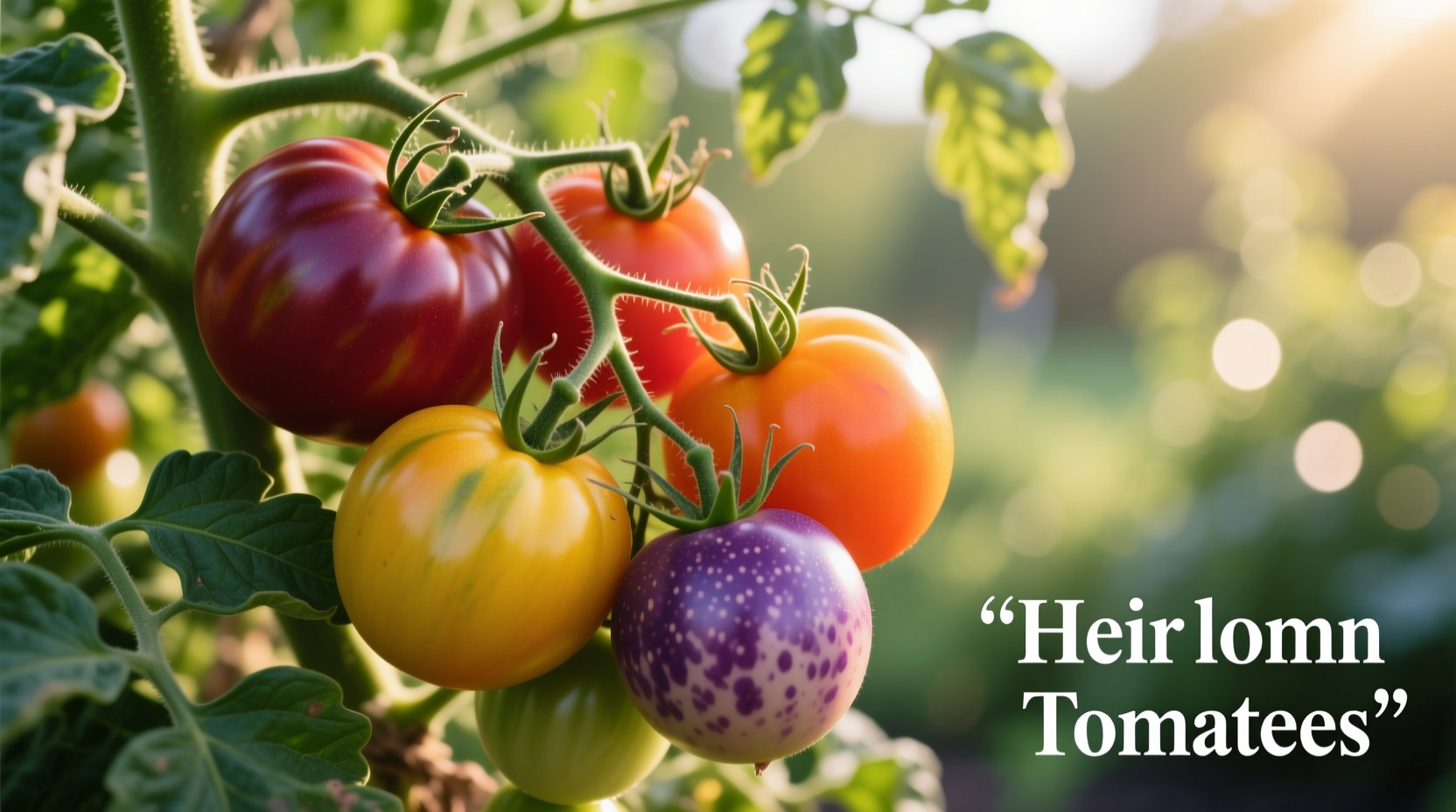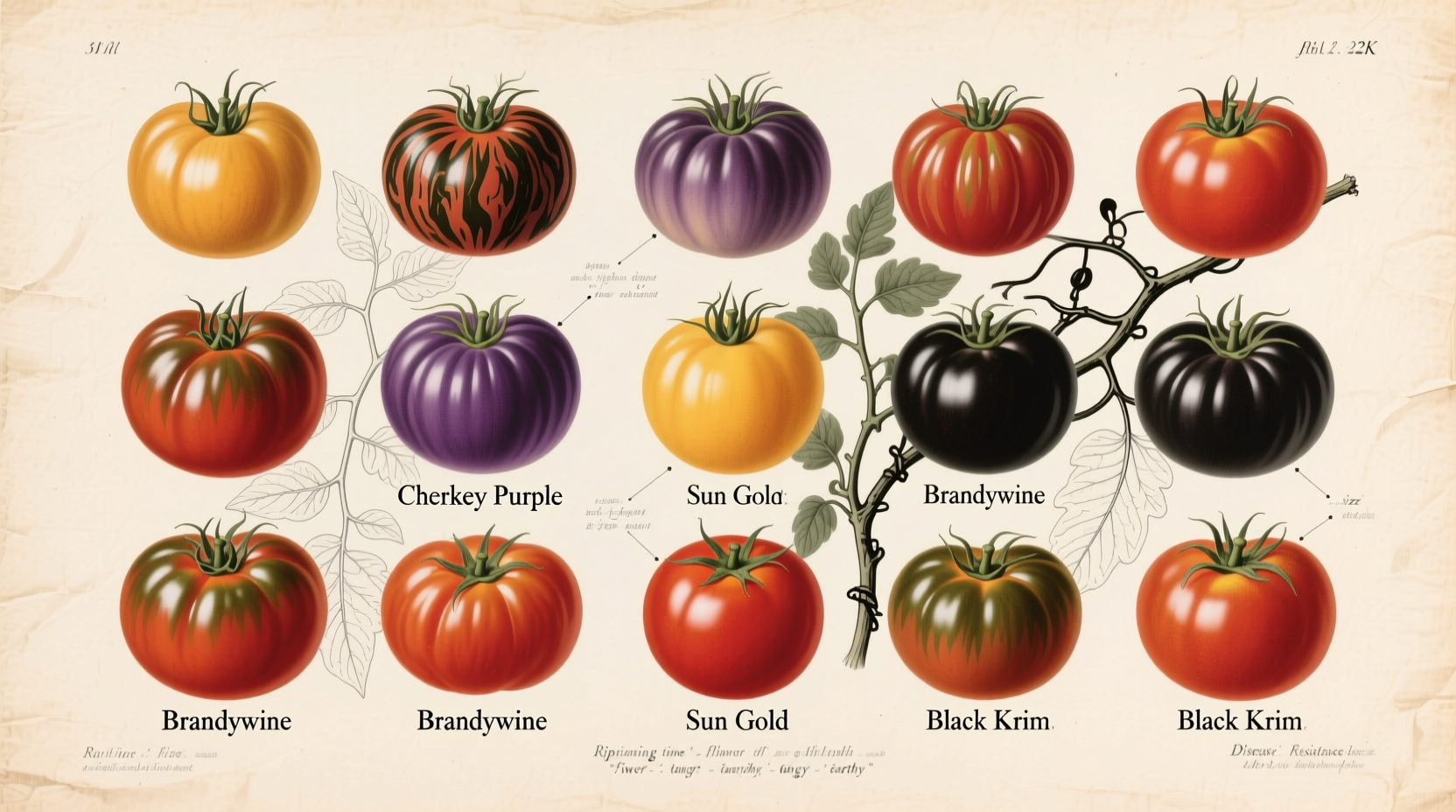Tomatoes are one of the most diverse garden crops, with varieties ranging from tiny cherry types to massive beefsteaks. Understanding the differences between tomato varieties helps you select the right plants for your climate, space, and culinary purposes. This guide covers essential categories, popular varieties, and practical selection advice based on horticultural research and gardening experience.
Understanding Tomato Classification Systems
Before exploring specific varieties, it's essential to understand how tomatoes are categorized. Professional growers and seed catalogs use several classification systems that determine how plants perform in your garden.
Growth Habit: Determinate vs. Indeterminate
Determinate tomatoes (bush types) grow to a fixed height and produce fruit over a short period, making them ideal for container gardening and canning. Indeterminate varieties continue growing and producing fruit throughout the season until frost, perfect for continuous harvests. Approximately 65% of home gardeners prefer indeterminate types for their extended harvest window according to the Alabama Cooperative Extension System.
Heritage Status: Heirloom vs. Hybrid
Heirloom tomatoes are open-pollinated varieties passed down through generations, typically at least 50 years old. They offer exceptional flavor diversity but may have less disease resistance. Hybrid varieties (labeled F1) combine traits from two parent plants for improved disease resistance, yield, or climate adaptation. The USDA Agricultural Research Service notes that modern hybrids have significantly improved resistance to common tomato diseases like fusarium wilt and verticillium.
Top 10 Most Popular Tomato Varieties Compared
| Variety Name | Type | Days to Maturity | Best Uses | Disease Resistance |
|---|---|---|---|---|
| Roma | Determinate | 75 | Sauces, paste | Fusarium, Verticillium |
| Cherry | Indeterminate | 65 | Salads, snacking | Moderate |
| Beefsteak | Indeterminate | 80 | Slicing, sandwiches | Low |
| Brandywine | Indeterminate | 85 | Fresh eating | Low |
| San Marzano | Determinate | 78 | Paste, sauces | Fusarium |
| Early Girl | Indeterminate | 59 | Early season | Fusarium, Verticillium |
| Green Zebra | Indeterminate | 75 | Salads, visual appeal | Moderate |
| Black Krim | Indeterminate | 80 | Fresh eating | Low |
| Juliet | Determinate | 65 | Salad, roasting | Fusarium, Verticillium |
| Amish Paste | Determinate | 80 | Paste, sauces | Moderate |
Tomato Varieties by Primary Use Case
Selecting tomatoes based on your intended use ensures the best results in your garden and kitchen. Different varieties excel in specific applications due to their texture, flavor profile, and moisture content.
Best Tomato Varieties for Fresh Eating
For salads and sandwiches, look for varieties with balanced acidity and sweetness. Brandywine remains the gold standard for flavor among heirlooms, while modern hybrids like Mountain Merit offer similar taste with better disease resistance. According to University of Minnesota Extension, tomatoes with higher brix (sugar) levels generally receive better taste ratings in consumer trials.
Top Choices for Sauce and Paste Making
Roma, San Marzano, and Amish Paste varieties have thick walls and lower moisture content, reducing cooking time for sauces. The authentic San Marzano dell'Agro Sarnese-Nocerino holds a Protected Designation of Origin (PDO) status in Europe due to its distinctive flavor profile. For gardeners seeking disease-resistant sauce tomatoes, Plum Regal offers excellent resistance to multiple common tomato diseases while maintaining rich flavor.
Container-Friendly Tomato Varieties
When growing tomatoes in pots, choose compact or determinate varieties that won't outgrow their space. Patio Princess, Bush Early Girl, and Tumbling Tom perform exceptionally well in containers as small as 5 gallons. The Cornell University Cooperative Extension recommends determinate varieties for container gardening as they typically have more compact root systems.
Historical Evolution of Tomato Cultivation
The tomato's journey from wild plant to garden staple spans centuries. Originally native to western South America, tomatoes were first domesticated by the Aztecs and Incas. Spanish explorers brought them to Europe in the 16th century, where they were initially grown as ornamental plants due to fears they were poisonous. By the 18th century, tomatoes gained acceptance as food across Europe, with Italy embracing them most enthusiastically. The first recorded tomato variety, Thomas Jefferson's Marseilles, dates to 1781. The 20th century saw significant breeding advances, particularly in disease resistance following devastating crop losses in the 1940s. Modern breeding focuses on flavor restoration while maintaining disease resistance—a balance that has improved significantly since the 2000s according to agricultural research from the University of California Agriculture and Natural Resources.
Climate-Specific Tomato Recommendations
Tomato performance varies dramatically by climate. Understanding your regional challenges helps select varieties with the best chance of success.
Cool Climate Varieties
Gardeners in northern regions or areas with short growing seasons should prioritize early-maturing varieties. Stupice (62 days), Siberian (65 days), and Glacier (55 days) reliably produce fruit even with limited warmth. These cold-tolerant varieties can set fruit at temperatures as low as 55°F (13°C), unlike most tomatoes which require at least 60°F (15°C).
Hot Climate Varieties
In regions with intense summer heat, look for varieties that continue setting fruit above 90°F (32°C). Heatmaster, Sunmaster, and Phoenix maintain good fruit set in high temperatures. The Alabama Cooperative Extension System notes that varieties with silver or grayish foliage often perform better in intense sunlight due to natural UV protection.
Unique and Heritage Tomato Varieties Worth Trying
Beyond mainstream varieties, numerous distinctive options offer unique flavors, colors, and historical significance. The Seed Savers Exchange maintains a collection of over 5,000 tomato varieties, preserving genetic diversity that commercial breeding has sometimes overlooked.
Green Tomatoes: Varieties like Green Zebra and German Green maintain green or yellow streaks even when ripe, offering complex flavor with less sweetness than red varieties.
Black/Purple Tomatoes: Black Krim from Crimea and Cherokee Purple developed by the Cherokee Nation feature deep purple shoulders and rich, complex flavor with earthy notes.
Yellow and Orange Varieties: Golden Jubilee and Orange Banana Legs provide sweeter, less acidic options that many find easier to digest.

How to Select the Perfect Tomato Variety for Your Garden
Choosing the right tomato variety involves considering multiple factors beyond just flavor preferences. Follow this decision framework to maximize your success:
Assess Your Growing Conditions First
Measure your available space, note your average frost dates, and observe sun exposure in your garden area. In regions with less than 100 frost-free days, prioritize varieties with 65 or fewer days to maturity. For small spaces, consider compact determinate varieties or dwarf types like Patio Choice Yellow.
Identify Your Primary Use
Be honest about how you'll use your harvest. If you plan to make sauce, dedicate 70% of your plants to paste varieties. For fresh eating, balance early, mid, and late-season varieties for continuous harvest. Many experienced gardeners follow the "rule of thirds"—one-third early varieties, one-third main season, and one-third late-season types.
Check Local Disease Pressure
Consult your local extension office about prevalent tomato diseases in your area. If verticillium wilt is common, select varieties with "V" resistance. For areas with severe fusarium issues, look for "F" resistance. Modern varieties often combine multiple resistances (labeled VFNT for verticillium, fusarium, nematodes, and tobacco mosaic virus).
Consider Flavor Balance
While disease resistance and yield matter, flavor ultimately determines gardening satisfaction. Look for varieties with higher brix (sugar) ratings and balanced acidity. The USDA Agricultural Research Service has identified specific compounds like geranial and citral that contribute to complex tomato flavor beyond simple sweetness.
Common Tomato Growing Mistakes to Avoid
Even with the perfect variety selection, common mistakes can undermine your harvest. Avoid these pitfalls for better results:
- Planting too early: Tomatoes need soil temperatures consistently above 60°F (15°C). Use a soil thermometer before transplanting.
- Overcrowding plants: Provide at least 24-36 inches between plants for proper air circulation.
- Incorrect watering: Water deeply but less frequently to encourage deep roots. Avoid wetting foliage to prevent disease.
- Skipping soil testing: Tomatoes prefer slightly acidic soil (pH 6.2-6.8). Amend soil based on test results.
- Ignoring pruning needs: Indeterminate varieties benefit from selective pruning to improve air flow and fruit quality.











 浙公网安备
33010002000092号
浙公网安备
33010002000092号 浙B2-20120091-4
浙B2-20120091-4